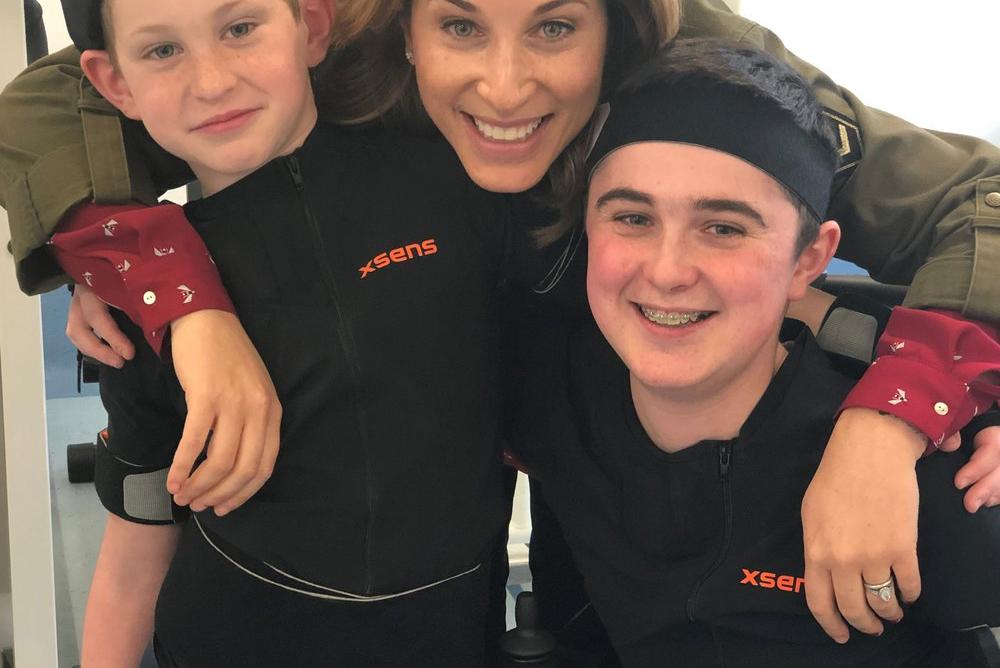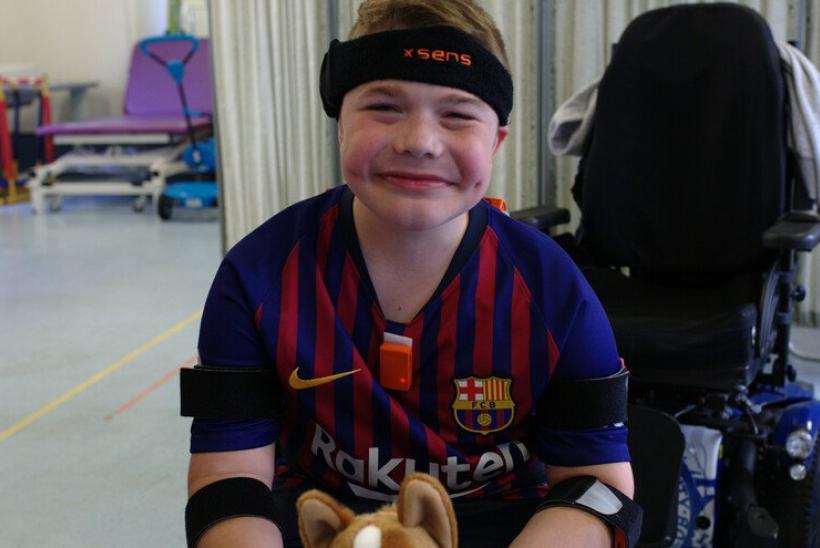Wearable technology and AI could improve clinical trials of the future
A group of researchers and clinical teams, including at Great Ormond Street Hospital and UCL Great Ormond Street Institute of Child Health (UCL GOS ICH), have combined their expertise to develop a new way to monitor the progression of movement disorders, using wearable suits and artificial intelligence, and increase the efficiency of clinical trials.
The new technology can identify clear movement patterns, predict future disease progression and significantly increase the efficiency of clinical trial monitoring in two rare disorders, Duchenne muscular dystrophy (DMD) and Friedreich's ataxia (FA). It works by combining data gathered from wearable sensors, with artificial intelligence technology and expert clinical knowledge.
FA and DMD are rare, degenerative, genetic diseases that affect movement and eventually lead to paralysis. The researchers hope that this technology will significantly speed up the search from new treatments, where there are currently no cures.
Researching rare conditions can be substantially more costly and logistically challenging, which means that patients are missing out on potential new treatments. Increasing the efficiency of clinical trials gives us hope that we can test many more treatments successfully.
First author Dr Valeria Ricotti, honorary clinical lecturer at the UCL GOS ICH
Gathering information on movement
Twenty-one boys with DMD, who were seen at GOSH, wore the body sensors whilst carrying out standard assessments for movement used in the clinic, for example a 6-minute walk test, as well as during regular everyday activities, like eating lunch or playing.
Gavriel was 17 when he took part in the trial in 2019, after being diagnosed with DMD when he was around 4 years old. His mum, Kerry said “The AI bodysuit trial is really important because it means doctors can very sensitively and quickly see any declines in movement and scientists can look at how the disease progresses in individuals. We know we are still a long way off a cure but we want our family’s experience to be for something. We want to turn what potentially was a tragedy into an opportunity by knowing we are helping future generations with this vital research.”

The researchers also collected video from children without DMD who were of a similar age to the boys with DMD taking part in the trial. This is so that they could compare the type of movement in boys with DMD to those without.
James, who has DMD, took part in this trial from the age of 10. His mum Mazz spoke about the experience saying "When we got a phone call asking if we wanted to be involved in the AI bodysuit trial at GOSH, we were keen take part as it could help James and other children in the future. Being part of the trial has been quite easy. The bodysuit monitors his movements, so they'll be able to track that change."
Below you can see a video of him walking with the technology measuring his movement.
It was a real privilege to work with many children and families on this immensely important piece of work. Functional outcome measures, which clinical trials rely on often vary with mood, environmental factors and motivation. Being able to capture movement in such detailed and objective way would eliminate these factors and give true representation of any changes irrespective of level of mobility or understanding.
Co-author Victoria Selby, research Physiotherapist at GOSH
Movement fingerprints
All of the data collected was assessed by an AI tool that created a unique profile of movement, like a fingerprint. By comparing the movement ‘fingerprints’ with that of healthy children, the AI could identify movement features that indicated a child has DMD – these are called disease markers.
The scientists also discovered that this technology could significantly improve predictions of how a patients’ disease would progress over six months, which can make clinical trials more efficient so that patients can access novel therapies quicker.
These studies show how innovative technology can significantly improve the way we study diseases day to day. It is thanks to collaborations across research institutes, hospitals, clinical specialities and with the help of dedicated patients and families that we can start solving the challenging problems facing rare disease research.
Co-author Professor Thomas Voit, Director of the NIHR Great Ormond Street Biomedical Research Centre (NIHR GOSH BRC) and Professor of Developmental Neurosciences at UCL GOS ICH
The future of clinical trials
The new technology could help researchers carry out clinical trials of conditions that affect movement more quickly and accurately.
In the DMD study, the researchers estimate that 50% fewer patients would be needed to participate in a clinical trial when this monitoring technology is used. This is particularly important for rare diseases where there are fewer children affected by the condition overall.
In addition, the power of the technology to identify many types of movements allows patients to be monitored across life-changing disease events, such as worsening of the ability to walk. This is important as currently separate trials must be run for children with different movement abilities.
The need to accurately measure statistically significant improvement and understand disease progression has never been more important. The Duchenne Research Fund is proud to have supported the teams at GOSH and Imperial to progress our vision of helping create more accurate clinical trials for all ages and phases of Duchenne muscular dystrophy
Dr Sarah Shelley, medical trustee at the Duchenne Research Fund, who helped to fund the research
Find this research
This new research was published in Nature Medicine and included research on DMD described above and on Fredreich's ataxia:
Wearable full-body motion tracking of activities of daily living predicts disease trajectory in Duchenne muscular dystrophy
A wearable motion capture suit and machine learning predict disease progression in Friedreich’s ataxia
The research was only possible thanks to a large collaboration including researchers at Imperial College London, MRC London Institute of Medical Sciences (MRC LMS), UCL Ataxia Centre, UCL Great Ormond Street Institute for Child Health (UCL GOS ICH) and the NIHR Great Ormond Street Hospital Biomedical Research Centre (NIHR GOSH BRC) as well as clinical teams and scientists at Great Ormond Street Hospital, UCLH and the National Hospital for Neurology and Neurosurgery. The research was funded by a UKRI Turing AI Fellowship, the NIHR Imperial College BRC, the Duchenne Research Fund, the NIHR Great Ormond Street Hospital (GOSH) Biomedical Research Centre (BRC), UCL/UCLH BRC, and the UK Medical Research Council.


